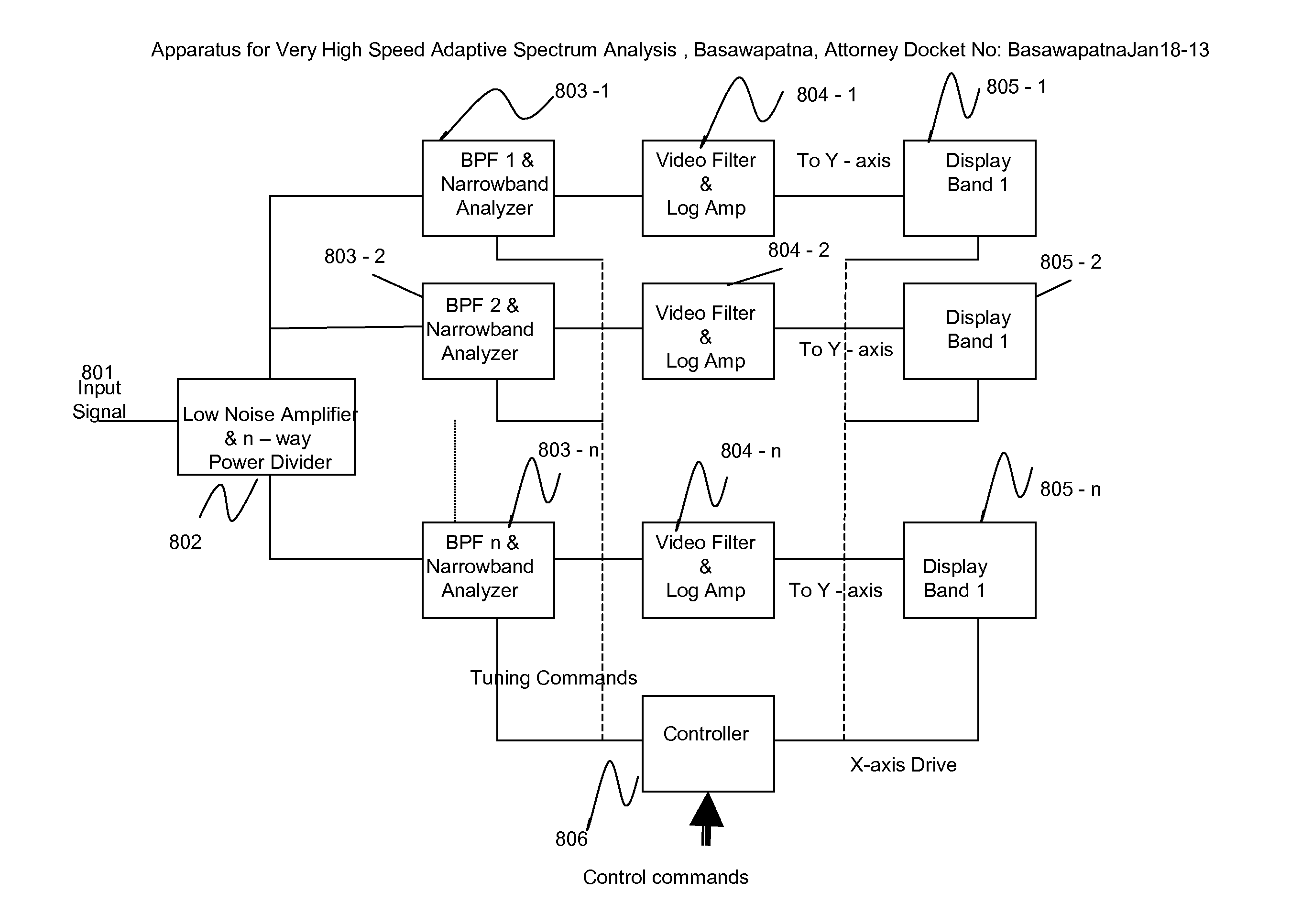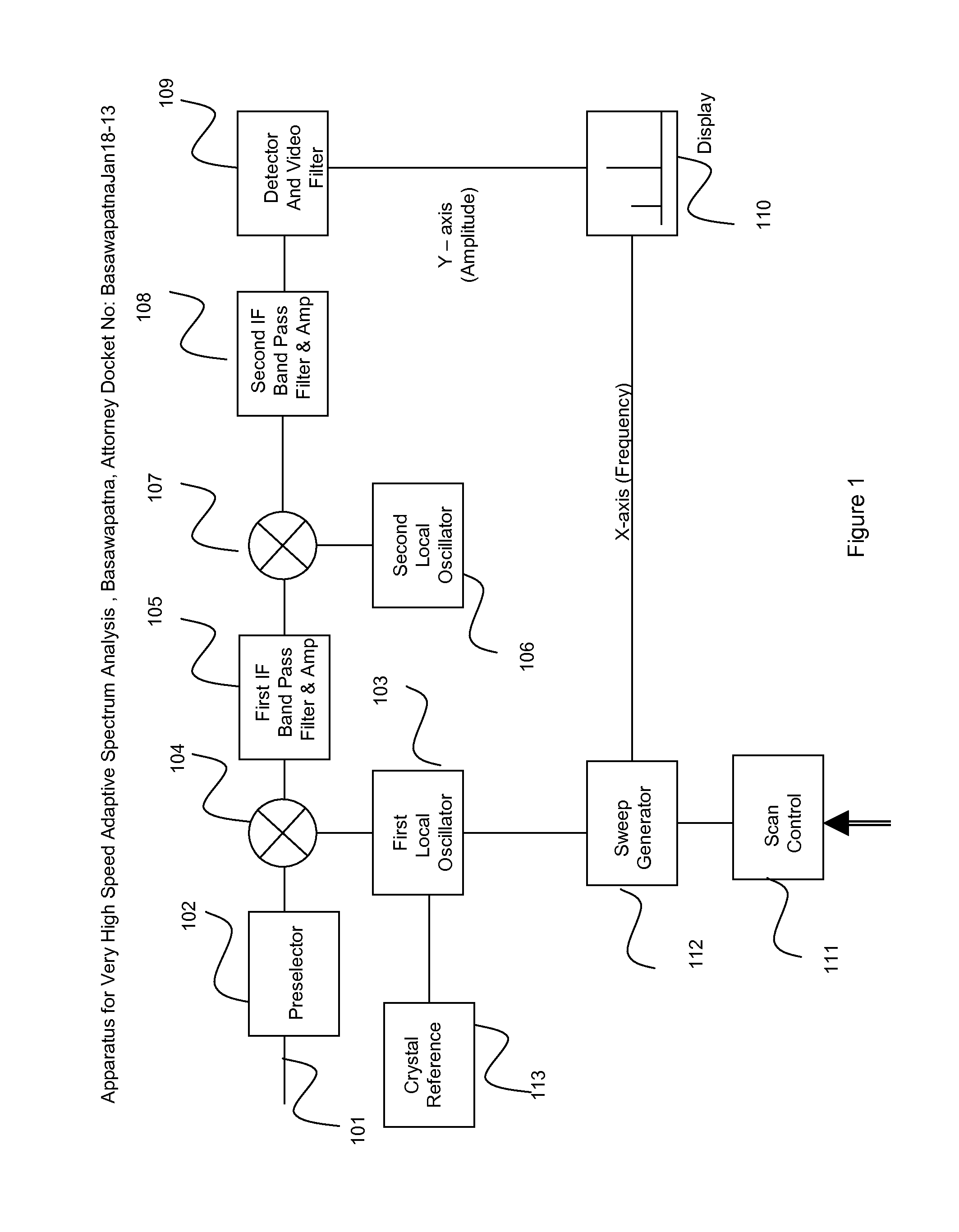Apparatus for Very High Speed Adaptive Spectrum Analysis
a spectrum analysis and adaptive technology, applied in the field of apparatus for very high-speed adaptive spectrum analysis, can solve the problems of inability to meet the needs of users, inability to accurately identify signals, and many disadvantages, and achieve the effects of quick identification of signals, quick narrowing of signals, and quick verification of signals dynamically
- Summary
- Abstract
- Description
- Claims
- Application Information
AI Technical Summary
Benefits of technology
Problems solved by technology
Method used
Image
Examples
Embodiment Construction
[0034]The invention concepts are described in this section using the drawings referred to. They do not represent all possible embodiments, but are used primarily for illustrative purposes.
[0035]The proposed instrument block diagram is shown in simplified form in FIG. 3. The input signal 301 at frequency Fin is split into two equal signals at the splitter 302. One half of the signal is input to Mixer1, 305 and the other half to Mixer 2, 306. The local oscillator 307 for Mixer 1 is at a frequency Flo+Δf, and the local oscillator 309 for Mixer 2 is at frequency Flo−Δf. The value of Δf is kept constant and Flo is varied linearly with time from start frequency to some stop frequency, which define the region of interest for incoming signals. Both the local oscillators at Flo+Δf and at Flo−Δf are frequency synthesized at every point in the sweep and are controlled by the same crystal reference 308, so that they are exactly 2Δf apart in frequency. The offset Δf can be a very small offset, f...
PUM
 Login to View More
Login to View More Abstract
Description
Claims
Application Information
 Login to View More
Login to View More - R&D
- Intellectual Property
- Life Sciences
- Materials
- Tech Scout
- Unparalleled Data Quality
- Higher Quality Content
- 60% Fewer Hallucinations
Browse by: Latest US Patents, China's latest patents, Technical Efficacy Thesaurus, Application Domain, Technology Topic, Popular Technical Reports.
© 2025 PatSnap. All rights reserved.Legal|Privacy policy|Modern Slavery Act Transparency Statement|Sitemap|About US| Contact US: help@patsnap.com



